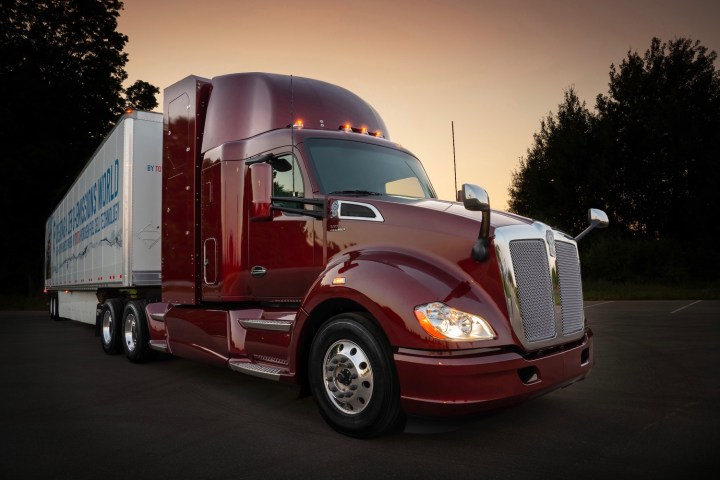
Toyota is serious about hydrogen fuel cells — and not just for cars. The Japanese automaker unveiled Project Portal, a hydrogen fuel-cell semi truck, in April 2017, and since then it’s logged nearly 10,000 miles of testing and hauling cargo around the ports of Los Angeles and Long Beach. Now Toyota is deploying an upgraded, second-generation version.
Project Portal 2.0 uses the same powertrain as its predecessor, which consists of two hydrogen fuel-cell stacks lifted from Toyota Mirai sedans, plus a 12-kilowatt-hour battery pack. The new truck produces the same 670 horsepower and 1,325 pound-feet of torque as the original Project Portal “Alpha” vehicle, but Toyota says range has increased by 100 miles, to 300 miles per hydrogen fill-up.
Toyota also added a sleeper cab for Project Portal 2.0, although it’s unclear how often it will be used. The original Project Portal truck is currently used in “drayage” operations, hauling cargo relatively short distances from docks to nearby rail yards and warehouses. This keeps the truck close to a fueling station at all times, and demonstrates a greener alternative to the 16,000 pollution-spewing diesel trucks Toyota claims are currently puttering around the ports of Los Angeles and Long Beach. The sleeper cab seems aimed more at demonstrating Toyota’s ability to package fuel-cell powertrain components within a relatively stock semi-truck body than any immediate real-world use (related: semi-truck body shop).
Project Portal represents a different approach to zero-emission trucking than some other companies are taking. While Toyota is concentrating on short-haul drayage, Nikola Motors is promising a production hydrogen fuel-cell semi for longer hauls. Tesla and newcomer Thor Trucks are planning long-haul trucks powered by batteries. But these companies will have to ensure that there are enough hydrogen fueling stations or charging stations to support their rigs.
Toyota also hasn’t committed to a timeline for launching a production version of Project Portal. The automaker said version 2.0 is closer to being commercially viable, and has discussed selling fuel-cell trucks in the past, but won’t offer any other specifics. Note that both Project Portal trucks are based on existing Kenworth chassis, not a Toyota-specific design.
Hydrogen fuel-cell vehicles are still hampered by a lack of fueling stations and high production costs, but Toyota remains committed to the technology. The automaker plans to produce the next-generation Mirai in much larger numbers, hoping to drive prices down through economies of scale. While the current-generation Mirai already has a range of 310 miles — more than most battery-electric cars — Toyota is also expected to increase the range of the next-generation model in order to make it more appealing to customers.


